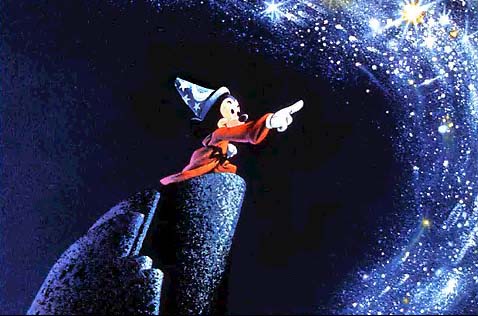
By Nirit Anderman
When Doron Meir was a boy, his father used to drag him to the cinema as an excuse to watch cartoons. He knew that if he entered the hall in which "Fantasia" was playing without a child at his side, people would stare at him awkwardly. Animation, many then thought, was strictly a children's affair.
Several years have passed since, and today Meir, 33, is an animator who fulfilled many of his colleagues' dreams: He worked on a full feature animated film, in the tradition of the films Disney Studios used to produce back when he was a child. Although he was only one of dozens of animators who worked on the film "Asterix and the Vikings," which premiered six months ago in Europe, he still feels highly privileged. The production of such a film, with a budget of several dozen million dollars, is quite rare these days.
Most of the animated features produced in Hollywood in recent years are computer-animated films, created with advanced three-dimensional imaging programs. The production of an animated film, with dozens of animators working on thousands of drawings, is considered a financial gamble most studios don't rush into. The animated films and series still created today are mostly marketed to the television industry, and produced on relatively low budgets, requiring shortcuts and tricks to reduce the production's expense.
Meir left Israel two years ago and relocated to Denmark in order to work on "Asterix and the Vikings." "I accepted the offer because of my love for the Asterix books, which I have known since childhood, and also because I wasn't sure how many more opportunities like this will present themselves. Today, the entire world of animation is shifting to 3D, and I wanted to take part in a movie like this one, still done in two-dimensional animation," he says.
"I think this is the largest animation production, budget-wise, done in Europe to date," says Meir, now visiting Israel. "The goal was to create quality animation, on par with Disney, meaning that if you have 21 frames a second, then in each one, you draw the whole frame from scratch. In most TV-ready animation series produced today, they draw the body only one time, and what changes from one drawing to the next is the way they draw the mouth, so it looks like the figure is talking. This is limited animation, less convincing, and the coloring and backgrounds are also poorer."
'My heart leans toward 2D'
After he finished his work on the film, Meir joined a Danish animation company which develops 3D computer games, among them the successful "Hitman" game series. Tonight he will participate in a series of lectures at the Tel Aviv Camera Obscura school. Meir will lecture on the role of the animator in computer games, the Tel Aviv Animation Festival's curator, Dudu Shalita, will speak of animator training in an age of change, and animator Dror Lazar will survey new animation technologies.
When Meir is asked how he thinks the battle between 3D computer animation and hand-drawn animated films will be decided, he confesses that until a few years ago he believed that the traditional 2D animation was facing extinction.
"Today when someone decides he wants to animate, the easiest thing to do is to get a computer with 3D software and start working," he explains. "On the other hand, if you want to animate in 2D, you first have to sit and learn how to draw for a few years, then you need the equipment - camera, special desks - and it's much more complicated, it's a very large obstacle. On the other hand, I believe that the 3D animation taking over the animation world in recent years is merely a trend, and that in a few years it will change. 2D did not catch on in recent years simply because not enough good films were made using this technique. Besides, I don't believe that you can be a good 3D artist if you cannot also draw 2D animation. It's just like you need to know how to draw to be a good sculptor.
When he is asked about which animation he prefers, 2D or 3D, Meir takes his time. "After years of working in 2D, I realize it's very hard work, it wears you down, and I found out that I like to combine 2D with 3D, to switch between the two. But my heart leans toward 2D. Granted, it's more demanding work, and it takes me longer to produce the desired product - but therein lies my holy grail."
View full story.
No comments:
Post a Comment